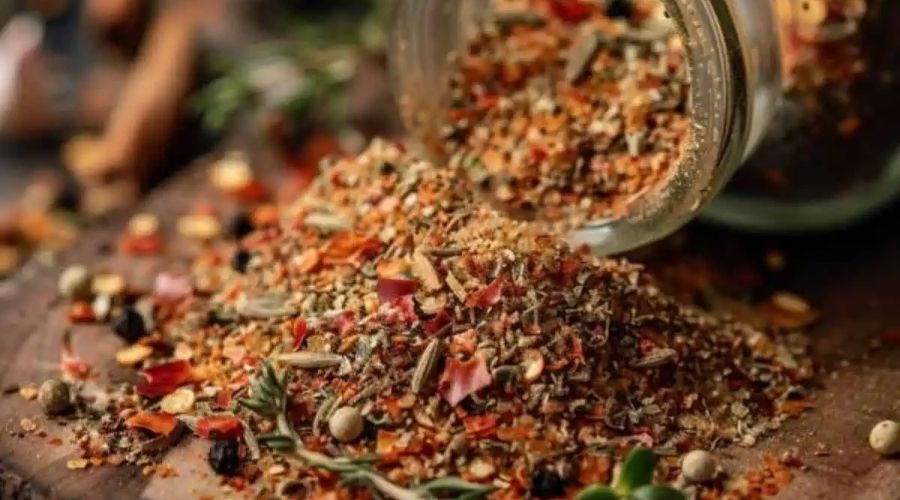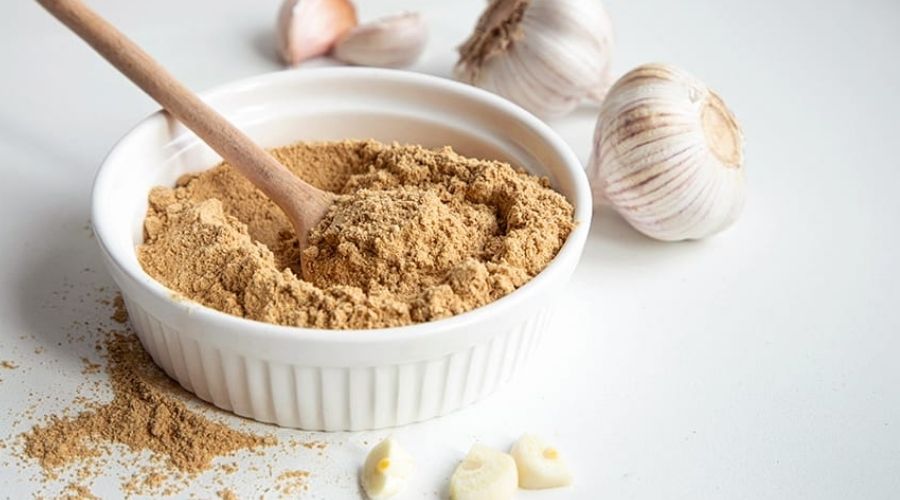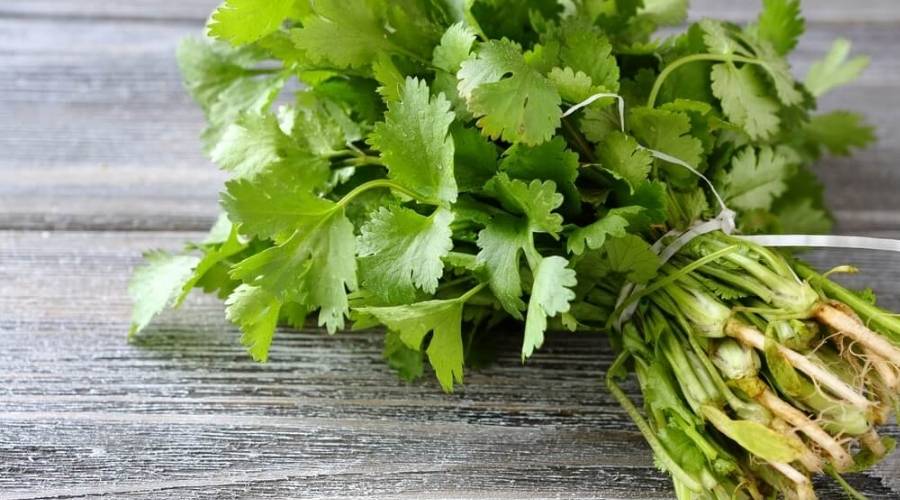Italian seasoning is a staple in many kitchens, prized for its blend of aromatic herbs that effortlessly enhance a variety of dishes.
However, there are times when you might find yourself without this convenient mix, whether due to a lack of ingredients or a desire for a different flavor profile.
The good news is that there are numerous easy substitutes that can stand in for Italian seasoning and still deliver a delicious result.
In this article, we’ll explore over eight simple and effective alternatives that you can use to keep your recipes flavorful and on-point.
From common pantry herbs to inventive blends, these substitutes will help you achieve that classic Italian taste without missing a beat.
8+ Flavorful Italian Seasoning Substitutes You Can Make at Home
Whether you opt for a homemade herb blend, use fresh herbs, or turn to creative alternatives like chili powder and cumin, each option offers its own unique twist on traditional Italian flavors.
By experimenting with these substitutes, you can maintain the essence of Italian seasoning in your cooking while also discovering new and exciting flavor combinations.
Herb Blend

A simple herb blend can serve as an effective substitute for Italian seasoning, especially when you need a versatile and customizable option.
Combine equal parts of dried basil, oregano, thyme, and rosemary to mimic the classic Italian flavor profile.
This blend offers a balanced mix of herbal notes that can enhance a wide range of dishes, from pasta sauces to roasted vegetables.
Be cautious with the amount you use, as the intensity of the herbs can vary.
This substitute works well in most recipes that call for Italian seasoning, but adjusting the quantities based on personal taste can help achieve the desired flavor balance.
Basil and Oregano
Basil and oregano are fundamental components of Italian seasoning and can be used individually or combined as a substitute. Basil provides a sweet and aromatic flavor, while oregano adds a robust, slightly bitter note.
Together, they create a flavor profile similar to Italian seasoning. This duo is particularly suitable for pizza sauces, pasta dishes, and marinades.
While basil and oregano are excellent substitutes, they may not cover all the nuances of Italian seasoning, such as the addition of thyme or rosemary.
Use them in equal parts for a balanced flavor and adjust based on the dish you’re preparing.
Also Read: 12+ Flavorful Chicken Seasoning Substitutes for Every Kitchen!
Herbes de Provence
Herbes de Provence, a blend of dried herbs commonly used in French cuisine, can be a useful substitute for Italian seasoning.
This mix typically includes thyme, rosemary, basil, and lavender, offering a complex and aromatic flavor profile that works well in Italian dishes.
While not an exact match, Herbes de Provence adds a unique twist to recipes like pasta sauces, stews, and roasted meats.
The presence of lavender can impart a slightly floral note, so use this substitute sparingly to ensure it complements rather than overwhelms your dish. Adjust the amount based on your taste preferences and the specific recipe.
Parsley and Garlic Powder

For a more straightforward and accessible alternative, combining dried parsley with garlic powder can effectively replace Italian seasoning.
Parsley adds a fresh, herbaceous note, while garlic powder contributes a savory depth.
This combination is particularly suitable for recipes where the primary goal is to add a flavorful kick without the complexity of Italian seasoning.
It works well in dishes such as meatballs, grilled vegetables, and salad dressings.
Keep in mind that this substitute lacks the full spectrum of flavors found in Italian seasoning, so it may be beneficial to add additional herbs or spices to achieve a more nuanced taste.
Also Read: 12+ Best Fennel Seasoning Substitutes for Every Recipe!
Dried Thyme and Sage
Dried thyme and sage can serve as a good substitute for Italian seasoning, particularly in recipes that benefit from earthy, aromatic flavors.
Thyme provides a subtle, herbaceous note, while sage adds a robust, slightly peppery flavor.
This combination is suitable for dishes like soups, stews, and roasted meats, where you want to impart a deep, savory flavor.
Be cautious with sage, as it can be quite strong and may overpower other flavors if used in excess. Adjust the proportions to your taste, starting with smaller amounts and increasing gradually as needed.
Dried Fennel and Tarragon
Dried fennel and tarragon can offer an interesting twist as a substitute for Italian seasoning. Fennel seeds provide a sweet, licorice-like flavor, while tarragon adds a subtle anise and slightly tangy taste.
This pairing works well in dishes that require a distinctive, aromatic profile, such as roasted vegetables, poultry, or pasta sauces.
Keep in mind that fennel has a unique flavor that differs from the traditional Italian seasoning, so it may alter the taste of your dish.
Use this substitute in moderation and adjust the quantities to achieve a balanced flavor.
Marjoram and Cilantro

Marjoram and cilantro can create an intriguing alternative to Italian seasoning, with marjoram offering a sweet, mild flavor and cilantro contributing a fresh, citrusy note.
This combination is suitable for dishes like salads, grain bowls, and light pasta dishes where a bright, herbal flavor is desired.
While marjoram and cilantro do not replicate the exact profile of Italian seasoning, they provide a refreshing and unique flavor.
Be mindful of cilantro’s strong taste, which can be polarizing, so use it according to your preference and the specific requirements of your recipe.
Chili Powder and Cumin
Chili powder and cumin can be an unconventional but effective substitute for Italian seasoning when you’re looking to add a warm, slightly spicy flavor to your dishes.
Chili powder provides a complex mix of spices, while cumin adds an earthy depth.
This combination is particularly suitable for recipes like chili, tacos, or spicy pasta sauces. While this substitute offers a different flavor profile, it can enhance the dish in a new and exciting way.
Use chili powder and cumin in moderation, as their strong flavors can easily dominate the dish. Adjust the amounts to achieve the desired taste without overwhelming the other ingredients.
Also Read: 12+ Meat Tenderizer Seasoning Substitutes to Transform Your Cooking!
Easy Italian Seasoning Substitute Recipe
Creating a homemade Italian seasoning substitute is a straightforward and rewarding process, allowing you to customize the blend to your taste preferences.
This recipe combines common herbs and spices to replicate the classic flavors of Italian seasoning.
Perfect for use in pasta sauces, marinades, and roasted dishes, this blend offers a balanced mix of herbal notes that enhances a variety of recipes.
With just a few pantry staples, you can whip up a versatile seasoning that brings the essence of Italian cuisine to your kitchen.
Ingredients:
- 2 tablespoons dried basil
- 2 tablespoons dried oregano
- 1 tablespoon dried thyme
- 1 tablespoon dried rosemary
- 1 teaspoon dried garlic powder
- 1 teaspoon dried onion powder
- 1/2 teaspoon dried parsley (optional for extra freshness)
- 1/2 teaspoon salt (adjust to taste)
- 1/4 teaspoon black pepper (adjust to taste)
Instructions:
- Combine Herbs and Spices: In a medium-sized bowl, mix together the dried basil, dried oregano, dried thyme, and dried rosemary. These herbs form the core of the Italian seasoning flavor profile, providing a blend of savory, earthy, and aromatic notes.
- Add Garlic and Onion Powder: Stir in the dried garlic powder and dried onion powder. These ingredients add depth and enhance the overall flavor of the seasoning blend, making it more versatile and flavorful.
- Incorporate Optional Ingredients: If desired, add dried parsley to the mixture for an extra layer of freshness. This step is optional but can enhance the seasoning’s overall taste.
- Season to Taste: Add salt and black pepper to the blend, adjusting the quantities according to your taste preferences. Mix well to ensure that all ingredients are evenly distributed.
- Store the Blend: Transfer the seasoning mixture to an airtight container or a spice jar. Store in a cool, dry place away from direct sunlight. The seasoning blend will keep for several months, maintaining its flavor and potency.
Making your own Italian seasoning substitute at home is both simple and satisfying, allowing you to tailor the blend to your specific taste preferences.
This recipe combines essential herbs and spices to create a versatile seasoning that can elevate a wide range of dishes, from classic pasta sauces to flavorful marinades and roasted vegetables.
By mixing dried basil, oregano, thyme, and rosemary with garlic and onion powder, you achieve a well-rounded flavor profile that mirrors the traditional Italian seasoning.
The optional addition of dried parsley provides a fresh note, while salt and black pepper enhance the overall taste.
This homemade blend not only saves you from running to the store but also gives you control over the quality and flavor of your seasoning.
Enjoy the convenience and customization of this easy Italian seasoning substitute in your culinary creations.
1. What can I use as an easy substitute for Italian seasoning?
An easy substitute for Italian seasoning can be made from a blend of dried herbs commonly found in your pantry.
Combine equal parts of dried basil, oregano, and thyme to mimic the flavor profile of Italian seasoning. You can also add a pinch of garlic powder and onion powder for added depth.
This combination offers a similar herbal and aromatic quality, making it suitable for recipes like pasta sauces, soups, and marinades.
Adjust the proportions based on your taste preferences and the specific needs of your dish.
2. Can I use fresh herbs instead of dried ones for Italian seasoning?
Yes, you can use fresh herbs instead of dried ones for Italian seasoning, though the flavors will be more vibrant and may require adjustments.
Use approximately three times the amount of fresh herbs as you would dried herbs.
For instance, if a recipe calls for 1 tablespoon of dried basil, use 3 tablespoons of fresh basil.
Keep in mind that fresh herbs should be added towards the end of cooking to preserve their flavor and aroma. This approach works well in dishes like salads, pasta sauces, and fresh herb pesto.
3. How can I make an Italian seasoning substitute if I don’t have basil?
If you don’t have basil, you can create a flavorful Italian seasoning substitute by using a combination of other herbs.
Try using dried oregano, thyme, and rosemary as a base. To replace the sweetness of basil, you might add a small amount of dried mint or tarragon.
This blend will still provide a balanced herbal flavor suitable for most Italian-inspired dishes.
Adjust the quantities based on your taste preferences and experiment to find the perfect blend for your recipes.
4. Can I use store-bought seasoning blends as a substitute for Italian seasoning?
Yes, store-bought seasoning blends can be used as a substitute for Italian seasoning, especially if they contain a mix of herbs like basil, oregano, thyme, and rosemary.
However, be cautious of blends that include additional spices or salt, as they may alter the flavor of your dish.
If using a store-bought blend, taste your dish as you cook and adjust the seasoning as needed to ensure the flavor remains balanced. This method offers a convenient option if you’re short on time or ingredients.
5. How long can I store homemade Italian seasoning substitute, and how should I keep it?
Homemade Italian seasoning substitute can be stored for several months if kept in an airtight container in a cool, dry place away from direct sunlight.
To maintain its freshness and potency, ensure the container is tightly sealed and avoid exposure to moisture.
The flavors of the seasoning blend will gradually diminish over time, so it’s best to use it within six months for optimal flavor.
Regularly check the seasoning for any signs of loss in aroma or flavor, and replace it if needed.
References
- https://bitesofwellness.com/italian-seasoning-substitute/
- https://chefani.com/italian-seasoning-substitute/
- https://www.themediterraneandish.com/italian-seasoning/
- https://www.acouplecooks.com/italian-seasoning-substitute/
- https://www.livveganstrong.com/italian-seasoning-substitute/


